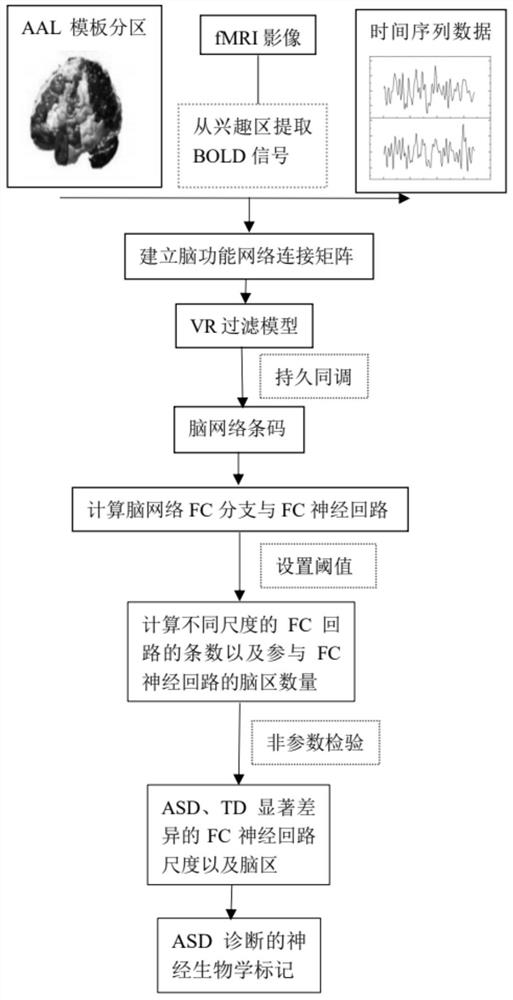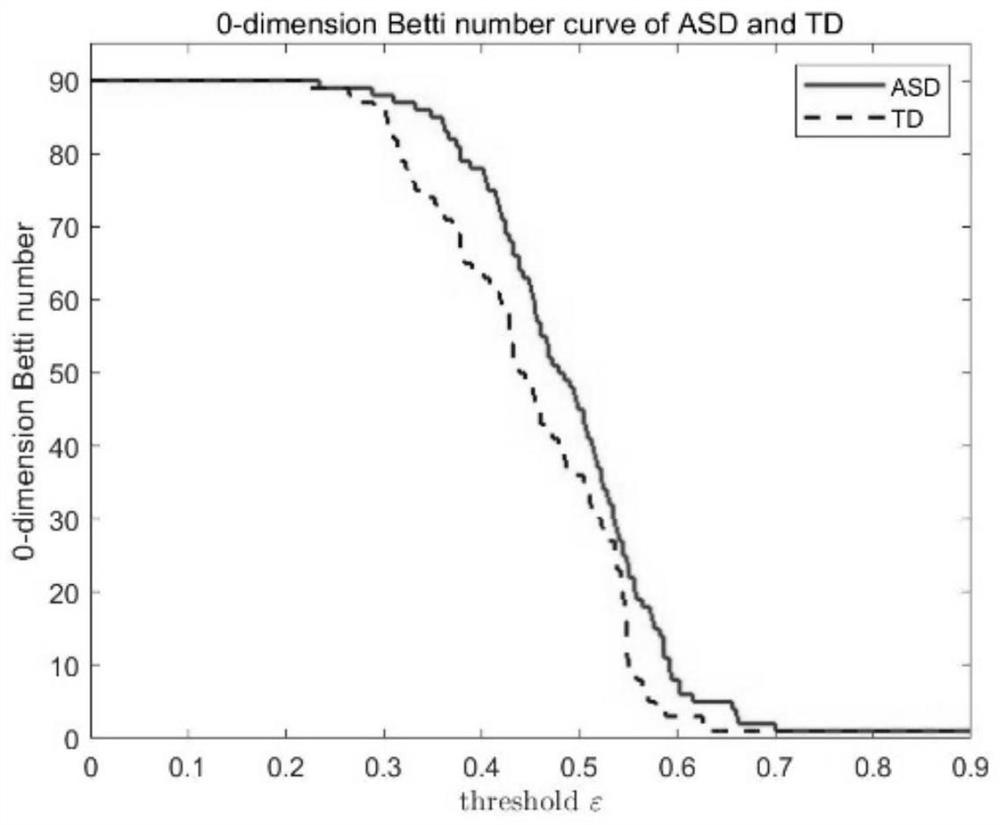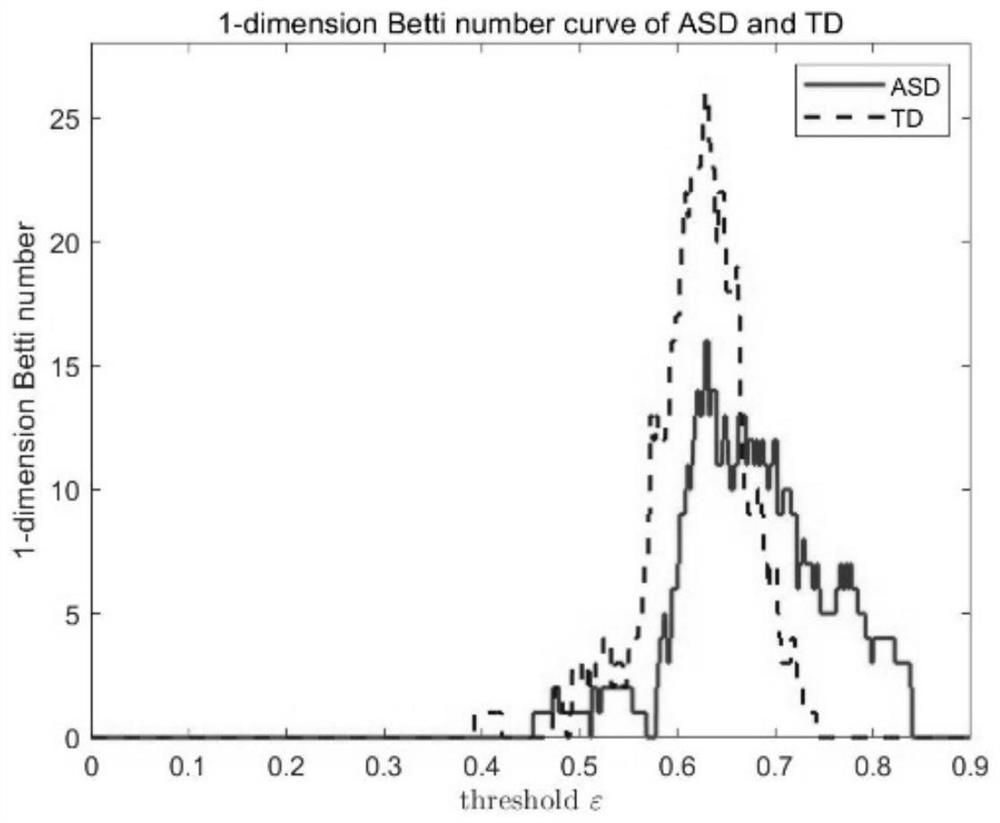Children autism neurobiological marker searching method based on persistent homology
A technique for autism and biology, applied in the field of finding neurobiological markers, can solve problems such as instability and achieve high diagnostic accuracy
- Summary
- Abstract
- Description
- Claims
- Application Information
AI Technical Summary
Problems solved by technology
Method used
Image
Examples
Embodiment 1
[0060] A method for finding neurobiological markers of children's autism based on persistent homology, comprising the following steps:
[0061] A. Use the resting state functional magnetic resonance data processing tool DPABI software to perform image preprocessing on the brain fMRI data in ABIDE. The process is as follows:
[0062] (1) remove the time point data with more noise in the first n;
[0063] n=10. When the subject enters the MRI scan, it will take a while for the gradient magnetic field to stabilize, and it will also take a while for the subject to adapt. Therefore, the image noise at the first few time points is more, usually choose to remove more than 4 time points, and the default is to remove the first 10 time points. indivual.
[0064] (2) Remove confounding variation caused by physiological processes (including heartbeat, head movement, and respiration); exclude brain fMRI data obtained when the subject's head movement exceeds 3mm and the rotation angle exc...
Embodiment 2
[0077] According to the method for finding a neurobiological marker of children's autism based on persistent homology described in Example 1, the difference is:
[0078] In step (6), the functional connection matrix of each pair of brain regions is calculated based on the blood oxygen level time series of the blood flow into the brain cells through MRI imaging, and the specific implementation steps include:
[0079] Select the brain area in the aal template as the vertex;
[0080] Use DPABI software to calculate the Pearson correlation coefficient (edge weight) between vertices, and obtain the relationship matrix of the human brain network, including:
[0081] Calculation of mean temporal signal sequences for 90 brain regions in the AAL template And the Pearson correlation coefficient of the brain area, the Pearson correlation coefficient of the brain area is the average time signal sequence of the brain area The Pearson correlation coefficient between, the Pearson corre...
Embodiment 3
[0095] According to a kind of method for finding neurobiological markers of children's autism based on persistent homology described in embodiment 2, the difference is:
PUM
 Login to View More
Login to View More Abstract
Description
Claims
Application Information
 Login to View More
Login to View More - R&D
- Intellectual Property
- Life Sciences
- Materials
- Tech Scout
- Unparalleled Data Quality
- Higher Quality Content
- 60% Fewer Hallucinations
Browse by: Latest US Patents, China's latest patents, Technical Efficacy Thesaurus, Application Domain, Technology Topic, Popular Technical Reports.
© 2025 PatSnap. All rights reserved.Legal|Privacy policy|Modern Slavery Act Transparency Statement|Sitemap|About US| Contact US: help@patsnap.com



